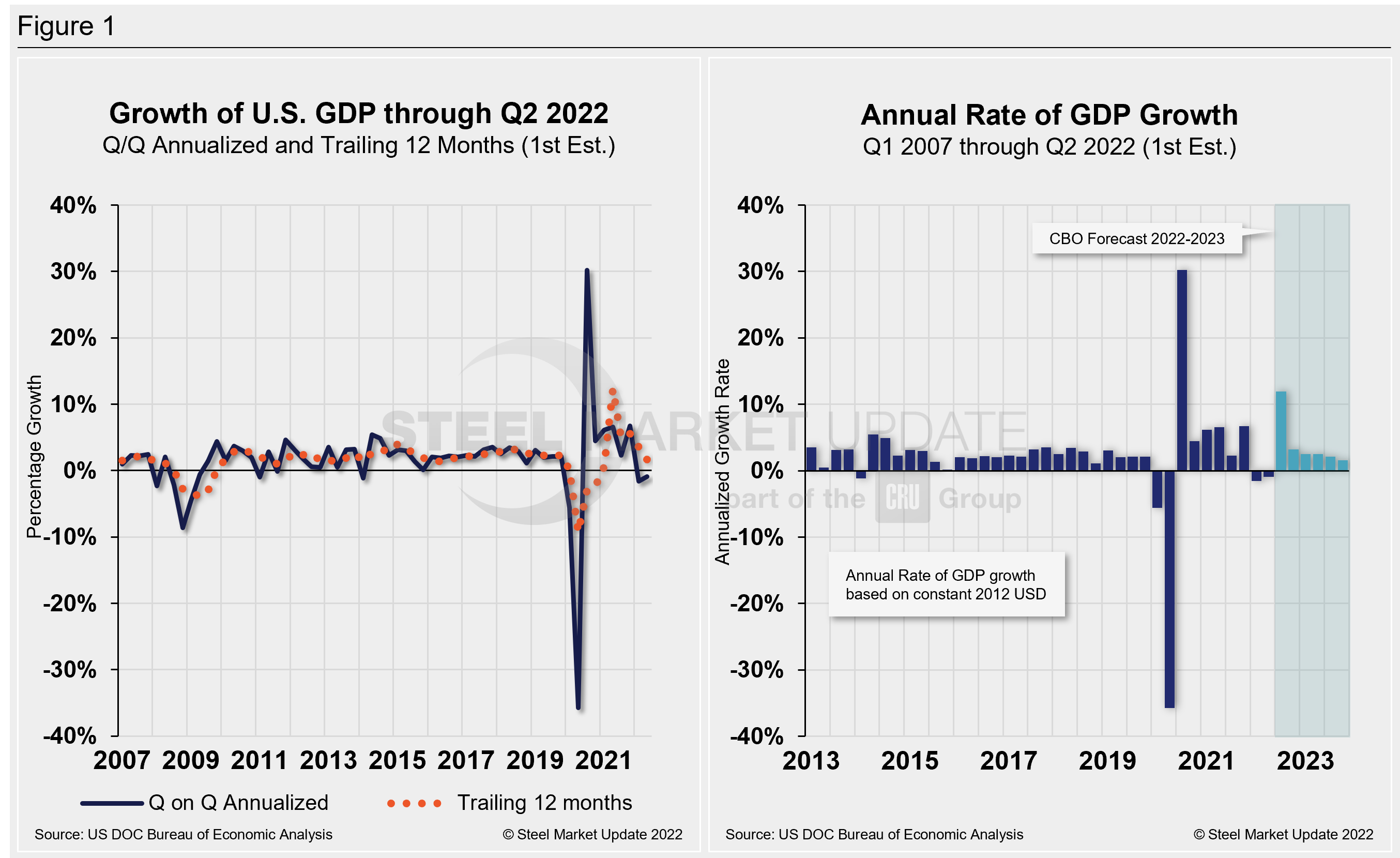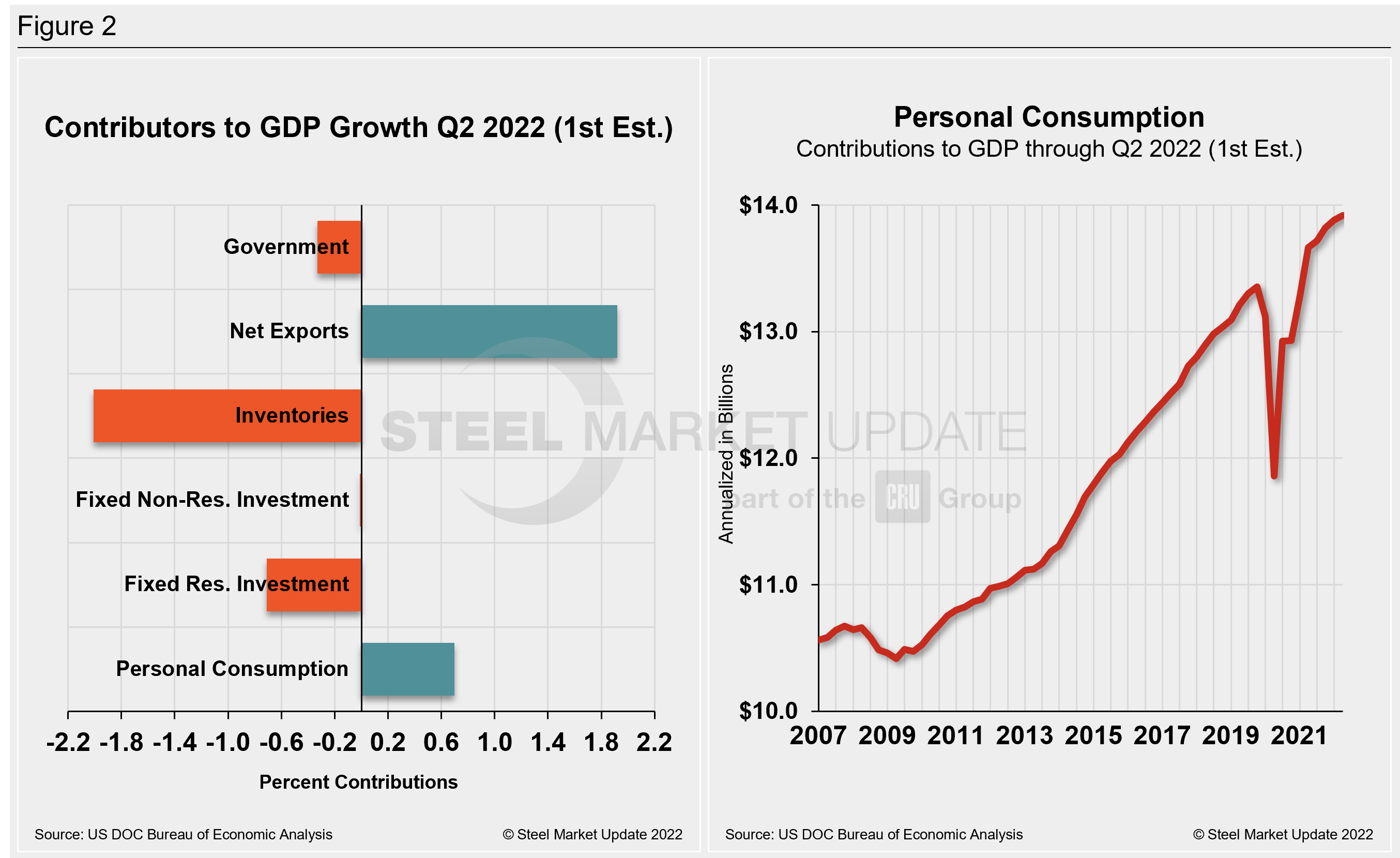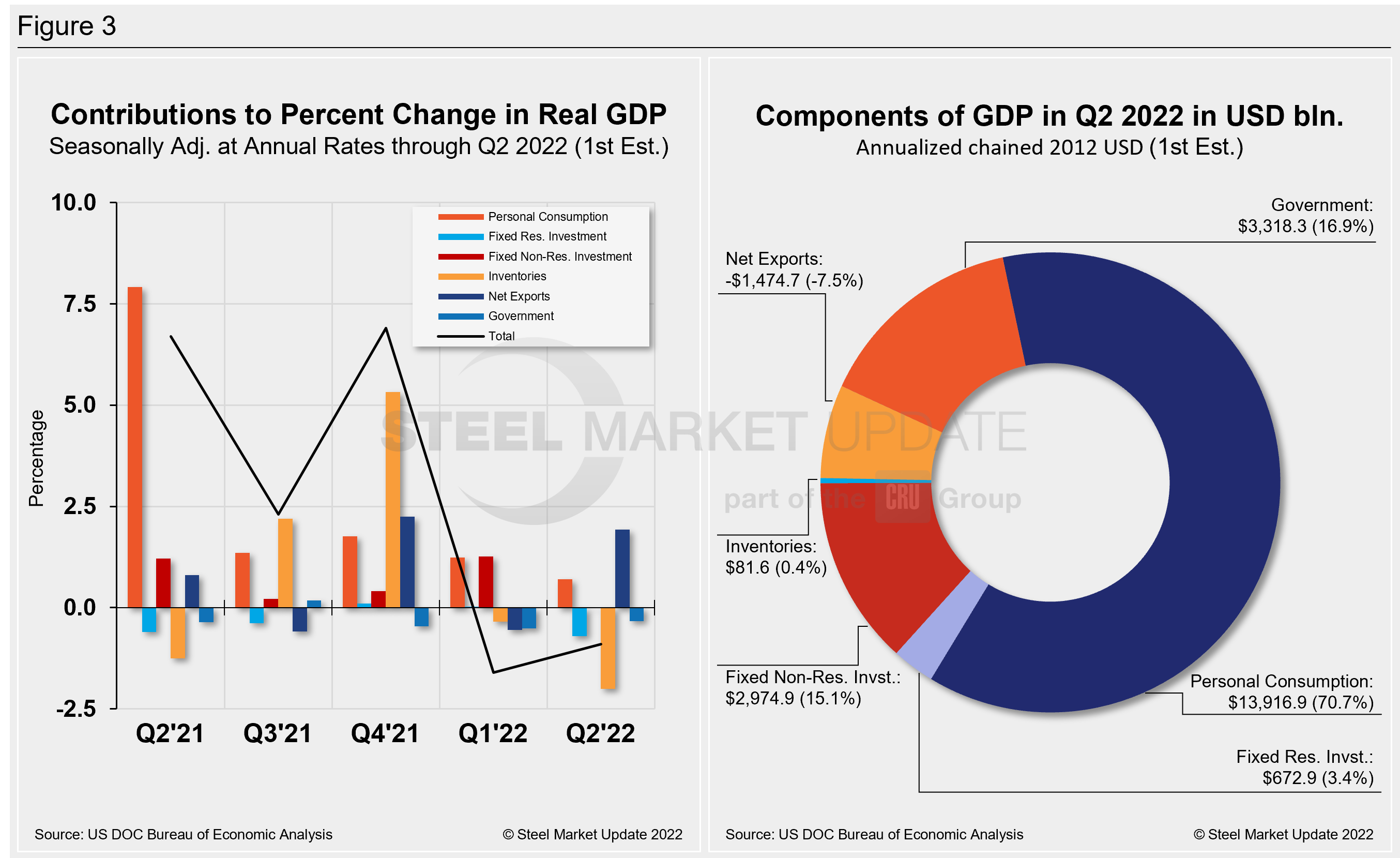Economy

US GDP Contracts Again, Enters Unofficial Recession Territory
Written by David Schollaert
July 29, 2022
The US economy contracted in the second quarter of 2022, declining for the second straight quarter. Some economists consider two consecutive quarters of negative GDP to be the definition of a recession.
Gross domestic production in Q2 declined at -0.09% annualized pace, according to advanced estimate from the US Commerce Department’s Bureau of Economic Analysis (BEA).
The lower growth rate in Q2 follows a declining annualized rate of -1.6% in the first three months of the year. It stands in marked contrast to the robust 6.9% annual increase in GDP recorded in the final quarter of 2021, when the economy roared back from Covid shutdowns.
The accelerated growth rate contributed to soaring inflation – now running at 40-year highs – and the Fed’s decision to sharply increase interest rates to bring down prices.
The advanced estimate by the BEA was worse than consensus estimates for a gain of 0.3%.
Multiple factors weighed on growth during the April-June period, including decreases in inventories, residential and nonresidential investment, and government spending at the federal, state, and local levels. Gross private domestic investment tumbled 13.5% for Q2.
Consumer spending, as measured through personal consumption expenditures, increased just 1% for the period as inflation accelerated. Spending on services increased during the period by 4.1%, but that was offset by declines in nondurable goods of 5.5% and in durable goods of 2.6%.
Inventories, which helped boost GDP in 2021, were a drag on growth in the second quarter, subtracting 2 percentage points from the total.
Two quarters of negative GDP growth is a traditional, rule-of-thumb signal that the economy has gone into recession. But the National Bureau of Economic Research (NBER) is the official arbiter of when recessions begin and end, and it probably won’t make a judgment on the period in question for months.
Commerce’s first look put total US GDP in Q2 at $24.85 trillion, a 7.8% increase, or $465.1 billion, over the previous quarter. Below in Figure 1 is a side-by-side comparison of US GDP growth and the annual rate of GDP, both through Q2 2022. In the first chart, you’ll see the contrast between the trailing 12-month growth and the headline quarterly result. The chart on the right details the headline quarterly results since Q1 2007, including the Congressional Budget Office’s GDP projection through 2023.
On a trailing 12-month basis, GDP accelerated by just 1.62% in the second quarter, down from 3.53% in the prior quarter but still well behind 12.23% growth in Q2. Yet, it’s a vast improvement from -9.27% in Q2 2020 at the height of the pandemic. For comparison, the average in 50 quarters since Q1 2010 has been a growth rate of 2.11%.

The latest GDP figures came a day after the Fed announced another three-quarter of a percentage point increase in its benchmark interest rates as it fights to tame inflation. Prices rose at an annual rate of 9.1% through June, driven up by soaring costs for fuel, food, and shelter.
Inflation is at the root of much of the economy’s troubles. The consumer price index rose 8.6% in the quarter, the fastest pace since Q4 of 1981. And supply chain issues, brought about initially by outsized demand for goods over services during the pandemic, are now at the core of the problem. The war in Ukraine and China’s zero-covid policy have exacerbated the crisis.
Shown below in Figure 2 is a side-by-side comparison of two charts. On the left is the mix of the six major components in the GDP growth calculation. The chart on the right puts a spotlight on personal consumption, a measure of consumer confidence and spending engagement.
The most notable change and a major source of GDP fluctuation is personal consumption, which has seen extreme swings since the onset of Covid. It has been resilient more recently but is no longer a bright spot after slipping from 1.24 to 0.70 quarter-on-quarter. It is now at its lowest mark in two years.

The quarterly contributions of the six major subcomponents of GDP since Q2 2021 and the breakdown of the $24.85 trillion economy in BEA’s third and final review of Q1 GDP are both shown in Figure 3. The chart on the left is for cross-comparison with Figure 1 above. The chart on the right shows the size of the other components relative to personal consumption.

By David Schollaert, David@SteelMarketUpdate.com

David Schollaert
Read more from David SchollaertLatest in Economy

Steel groups welcome passage of budget bill
Steel trade groups praised the passage of the Big Beautiful Bill (BBB) in Congress on Thursday.

Industry groups praise Senate for passing tax and budget bill
The Steel Manufacturers Association and the American Iron and Steel Institute applauded the tax provisions included in the Senate's tax and budget reconciliation bill.

Chicago PMI dips 0.1 points in June
The Chicago Purchasing Managers Index (PMI) slipped 0.1 points to 40.4 points, in June.

Multi-family pullback drives housing starts to 5-year low in May
US housing starts tumbled in May to a five-year low, according to figures recently released by the US Census Bureau.

Architecture firms still struggling, ABI data shows
Architecture firms reported a modest improvement in billings through May, yet business conditions remained soft, according to the latest Architecture Billings Index (ABI) release from the American Institute of Architects (AIA) and Deltek.
